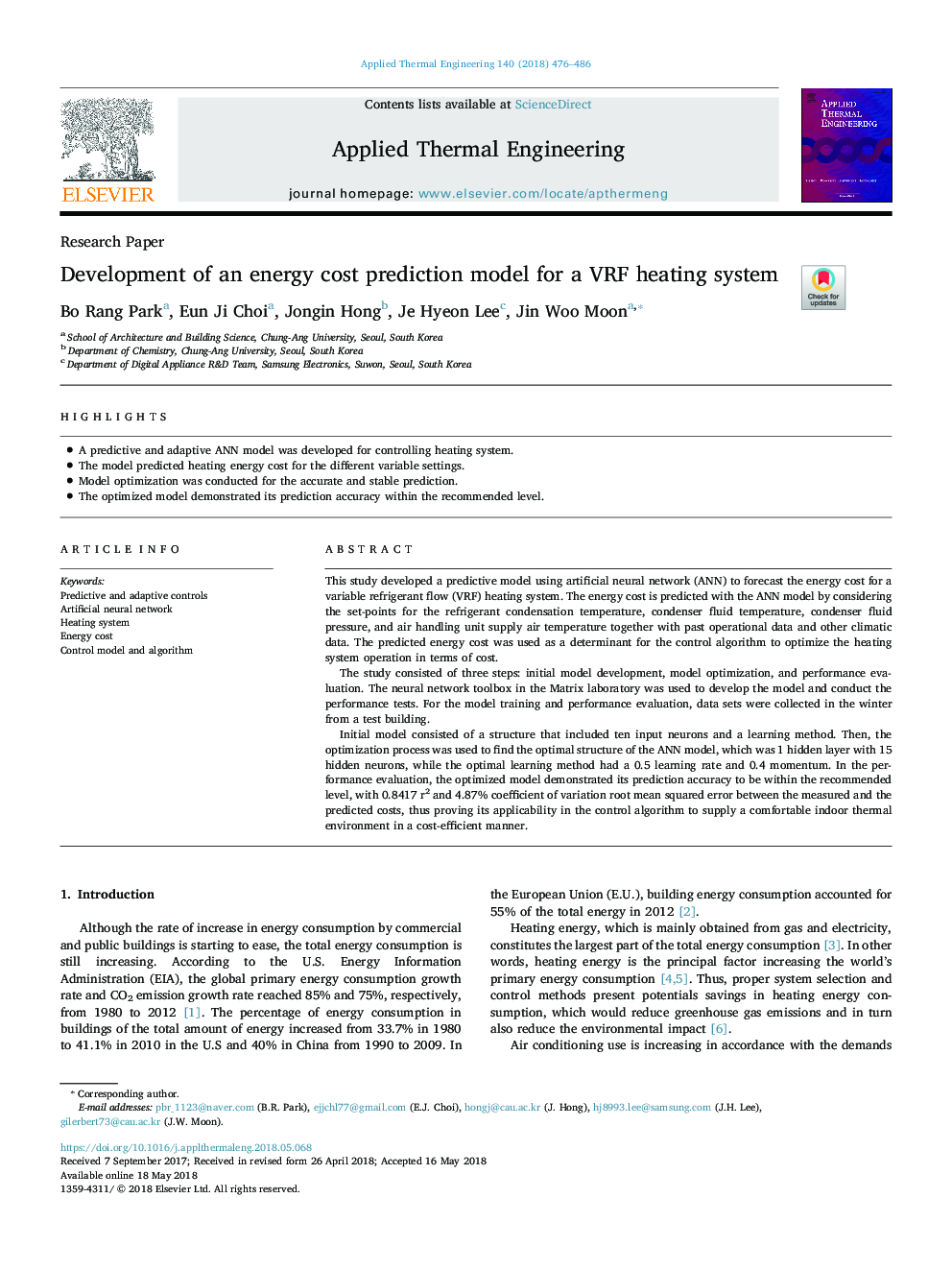| Article ID | Journal | Published Year | Pages | File Type |
|---|---|---|---|---|
| 7045088 | Applied Thermal Engineering | 2018 | 11 Pages |
Abstract
Initial model consisted of a structure that included ten input neurons and a learning method. Then, the optimization process was used to find the optimal structure of the ANN model, which was 1 hidden layer with 15 hidden neurons, while the optimal learning method had a 0.5 learning rate and 0.4 momentum. In the performance evaluation, the optimized model demonstrated its prediction accuracy to be within the recommended level, with 0.8417 r2 and 4.87% coefficient of variation root mean squared error between the measured and the predicted costs, thus proving its applicability in the control algorithm to supply a comfortable indoor thermal environment in a cost-efficient manner.
Related Topics
Physical Sciences and Engineering
Chemical Engineering
Fluid Flow and Transfer Processes
Authors
Bo Rang Park, Eun Ji Choi, Jongin Hong, Je Hyeon Lee, Jin Woo Moon,
